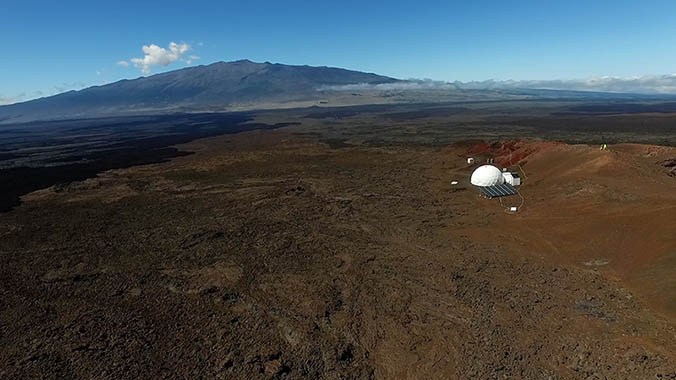Mock Mars Mission Suspended Due to Crewmember Accident

A crewmember of the mock Mars mission HI-SEAS (Hawaii Space Exploration Analog and Simulation) VI was admitted to the hospital yesterday morning (Feb. 19) after a minor accident, just a few days after the Hawaii-based simulation began.
According to safety protocols, the three remaining crewmembers have left the dome habitat, and the eight-month mission will be put on hold until an inspection and investigation have been completed, representatives for the University of Hawaii at Manoa, which operates the NASA-funded mission, said in a statement. The injured crewmember was admitted to the Hilo Medical Center and was held for a few hours for observation, they added, but further medical information cannot be provided without the crewmember's permission.
University of Hawaii spokesperson Dan Meisenzahl told the Honolulu Star-Advertiser that he was unsure how long it would take for the mission to resume and that more information may be available later in the week.
"It's the first time this ever happened," Meisenzahl told the Star-Advertiser.
The five previous HI-SEAS missions have studied international crews of four to eight living together in the dome, located at 8,200 feet (2,500 meters) on the Mauna Loa volcano in Hawaii. The missions have ranged from four months to a year, with crews living in isolation to test how humans would fare on long-duration planetary exploration missions. The HI-SEAS VI crew has members from Korea, Australia, Slovakia and Scotland.
Email Sarah Lewin at slewin@space.com or follow her @SarahExplains. Follow us @Spacedotcom, Facebook and Google+. Original article on Space.com.
Get the Space.com Newsletter
Breaking space news, the latest updates on rocket launches, skywatching events and more!
Join our Space Forums to keep talking space on the latest missions, night sky and more! And if you have a news tip, correction or comment, let us know at: community@space.com.

Sarah Lewin started writing for Space.com in June of 2015 as a Staff Writer and became Associate Editor in 2019 . Her work has been featured by Scientific American, IEEE Spectrum, Quanta Magazine, Wired, The Scientist, Science Friday and WGBH's Inside NOVA. Sarah has an MA from NYU's Science, Health and Environmental Reporting Program and an AB in mathematics from Brown University. When not writing, reading or thinking about space, Sarah enjoys musical theatre and mathematical papercraft. She is currently Assistant News Editor at Scientific American. You can follow her on Twitter @SarahExplains.









